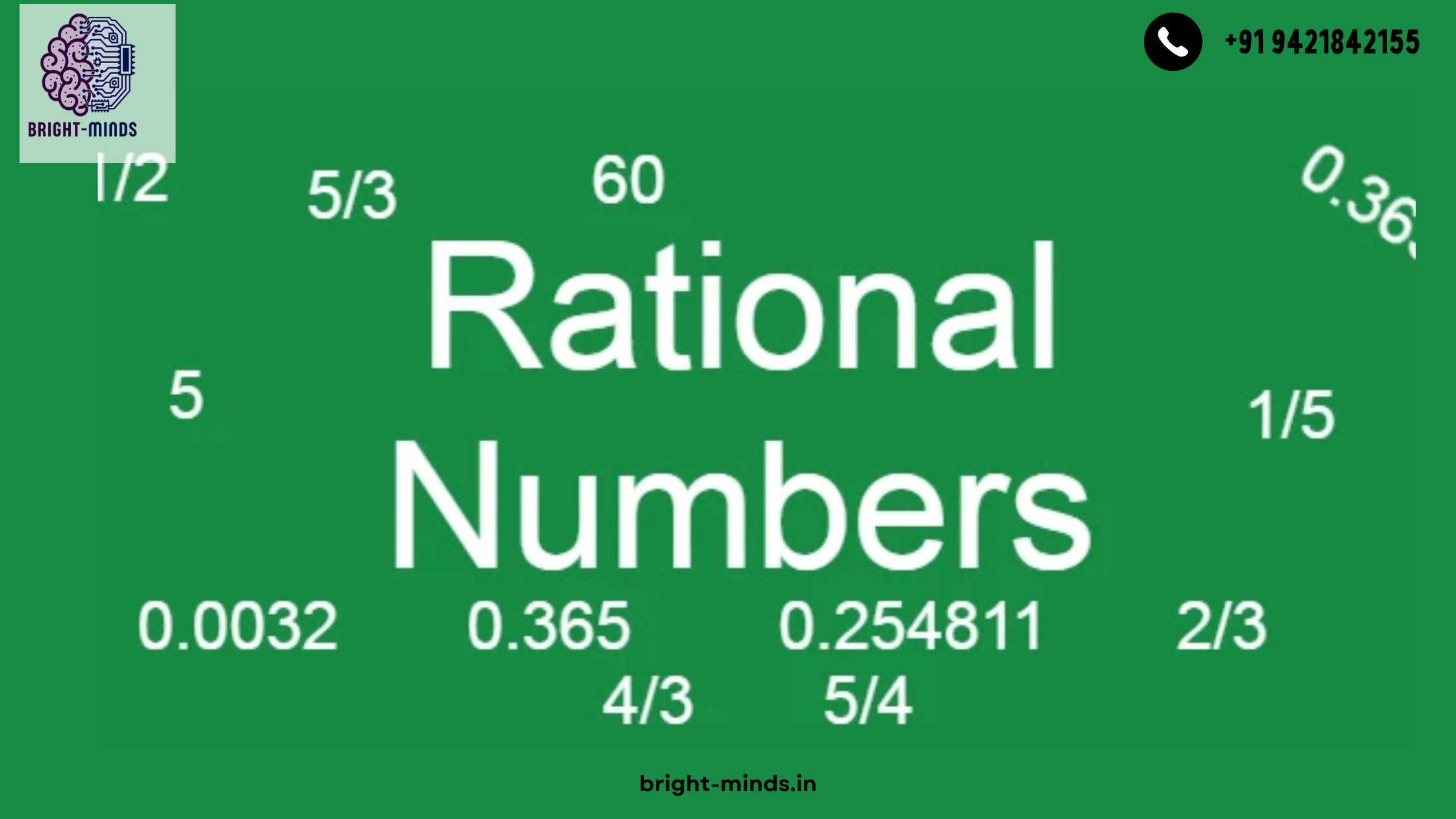What Are Rational Numbers?
Any number that can be expressed as a fraction p/q is considered rational, where:
pandqare integersq ≠ 0(denominator can’t be zero)
Examples of Rational Numbers:
- 1/2, -3/4, 5 (because 5 = 5/1), 0 (because 0 = 0/1)
So, rational numbers include:
- Fractions that are positive and negative
- Both whole numbers and integers
- Repetition and termination of decimals
Why Are Rational Numbers Important?
Understanding rational numbers helps students:
- Execute operations such as division, multiplication, subtraction, and addition.
- Use a number line to visualize the numbers.
- Get ready for more complex math concepts like algebra and equations.
Difference Between Rational and Irrational Numbers
| Rational Numbers | Irrational Numbers |
|---|---|
| Can be written as p/q | Cannot be written as p/q |
| Denominator is not zero | Cannot be expressed as a fraction |
| Example: 3/4, -2, 0.75 | Example: √2, π |
Rational Numbers on a Number Line
Yes! Rational numbers can be placed on a number line.
Example:
Let’s plot 1/2.
- Mark 0 with a line.
- Split the interval between 0 and 1 in half.
- 1/2 is the initial mark.
This can be done for any rational number.
Properties of Rational Numbers
- Closure
A rational number can be obtained by adding, subtracting, and multiplying two rational numbers. For instance, 1/2 + 1/3 equals 5/6 - Commutativity
a + b = b + a and a × b = b × a - Associativity
(a + b) + c = a + (b + c) - Existence of Identity
0 is the additive identity and 1 is the multiplicative identity. - Inverse
For any rational number a ≠ 0, there exists -a (additive inverse) and 1/a (multiplicative inverse).
Operations with Rational Numbers
1. Addition/Subtraction
- Convert to like denominators before solving.
Example:
1/2 + 2/3
= (3 + 4)/6
= 7/6
2. Multiplication
Multiply numerators and denominators directly.
Example:
2/3 × 3/4 = 6/12 = 1/2
3. Division
Flip (reciprocal) the second fraction and multiply.
Example:
(2/3) ÷ (4/5) = (2/3) × (5/4) = 10/12 = 5/6
Fun Tips to Remember
- In all cases, a whole number is a rational number (for example, 4 = 4/1).
- Since 0 = 0/1, zero is a rational number.
- Every fraction that has a non-zero denominator is logical.
- Repeating or ending decimals, such as 0.75 or 1.333, are also logical.
Real-Life Use of Rational Numbers
- Pizza division (fractions!) 🍕
- Money (in fractions, ₹1.50 is 3/2), 💰
- Measurements for cooking (1/4 teaspoon) 🍳
Quick Quiz (Try It Yourself!)
- Is -5 a rational number?
- Convert 0.25 into a rational number.
- What is the reciprocal of 3/4?
- Simplify: (2/3) + (5/6)
Conclusion
Both in mathematics and in our everyday lives, rational numbers are ubiquitous. Everything from fractions to algebra becomes lot easier for kids if they grasp how they operate.
You can also read for:-
Understanding Patterns in Mathematics: A Path to Problem-Solving

